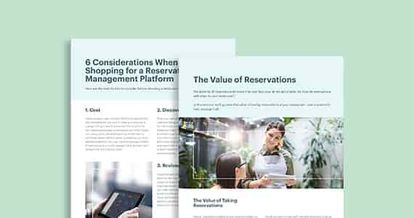It’s no secret that the cost of employee onboarding and turnover puts an enormous financial strain on restaurants. The Center for American Progress estimated that it costs 21.4% of an employee’s’ salary to cover the cost of finding a replacement. And Forbes found it costs a business between $15,000 and $25,000 to replace a millennial worker.
This might seem pretty doom and gloom given that staff turnover is so high in the restaurant industry.
But there is a silver lining!
Identifying a costly problem like turnover allows you to implement processes which can retain staff and lower your turnover rate, and it starts with employee engagement. Harvard Business Review found that when employees are engaged at work, they were happier, more productive, better performing, and less likely to leave. All of which helps your business, but most importantly, reduces the costs associated with turnover.
So how do you go about motivating your staff to work hard and stay engaged with their jobs?
That’s the question that has spawned a $74 billion dollar industry. While some solutions are costly and complex, there are plenty of things you can implement right now. Here are four easy ways to increase staff engagement for an immediate impact on turnover.

1) Sales Competitions
Take a page from Applebee’s playbook and implement a “gamification” system for FOH employees to increase sales. Create an outline of what what you want to sell, or upsell, and award employees points for every sale made. You can keep track of progress by pulling the data right out of your smart POS system. Rather than pit employees against one another for a reward, which can be detrimental to engagement, create a system to allow employees to trade in their “points” for rewards. This can include things like extra vacation, gift cards, or a free meal – all of which are great for making an employee feel valued and engaged in their work.
2) Learn What Motivates Your Team
Understanding what drives specific employees is a straight path to their – and your – success. Maybe you’re spending money hosting monthly staff outings or treating them to a free meal after each shift, but all they really want is shift flexibility. By knowing the best perks to give individual staff members, you can improve their performance, which in turn boosts your bottom line, and makes all those costly labor hours work better for you.
3) Incentivize Shift Pick-Ups
Along the same line as sales competitions, you can gamify your scheduling by creating a competition around shift pick-ups. For example, if you have a team member call in sick or need to take an unexpected leave, you can offer up the shift for grabs via an employee scheduling app like 7shifts. Once the shift has been offered, track who claims it and create a tally of who picked up extra shifts. Then, at the end of the month or quarter, tally the results and reward your top performers. This demonstrates to your staff that engagement pays dividends and reinforces the idea of being a productive and proactive team member.
4) Ask What Makes the Job Hard
Making sure your staff know they’re being heard is a sure-fire way to keep them engaged, especially when they feel they can talk about the parts of the job that aren’t always easy. It also helps you as an operator address any challenges related to mental health in restaurants that your workers may be experiencing.
It’s very likely that you are not even aware of the most stressful part of your staff’s job. The people using the processes are the ones most likely to see the flaws or errors. For example, if you run a busy brunch service and have all of the drinks coming from the bar: Bloody Mary’s, orange juice, soda water, but you have the coffee maker in the kitchen, it might not seem like a big deal to you, but could be a big time waster for the server to run to the back every time they pick up a round of drinks. By moving the coffee station to the bar, they could speed up their service and turn more tables.
When you figure out where the pain points are for your team, you’re engaging them and making their experience and your business better.

5) Reward “Going The Extra Mile”
Reinforcing positive work behaviors that help your business grow is a no-brainer to keeping your staff engaged. Have managers record instances where staff “go the extra mile” for guests or coworkers in their shift notes or manager log book. At the end of each month put the names of the employees who performed the actions into a raffle for a prize. This demonstrates to staff the value of staying engaged, but also that your business values and rewards this kind of behavior.
6) Employee Referrals
One of the quickest ways to reduce the cost of employee turnover is to always have a pipeline full of potential candidates to easily reach out to when filling a vacancy. If you are low on staff for the short-term, you may consider temporary restaurant staffing while you work on hiring a new team member.
Who knows talented people better than your own staff? In fact, research shows that employee referrals are likely to be more productive and engaged than non-referrals and referral systems are used by companies from Google to Burger King. To get started, create a referral bonus structure that awards current (and even former employees) for referring new hires to your business. If the hire passes the probationary period, reward the referring employee and let everyone else know they too can take advantage by always being on the look-out for great team members.
When you keep your team happy, they keep your diners happy. Implementing some of these practices to keep your staff engaged will keep your team smiling and improve your business. Win win!
Download your free employee handbook template
Sign up for our free weekly TouchBistro Newsletter







